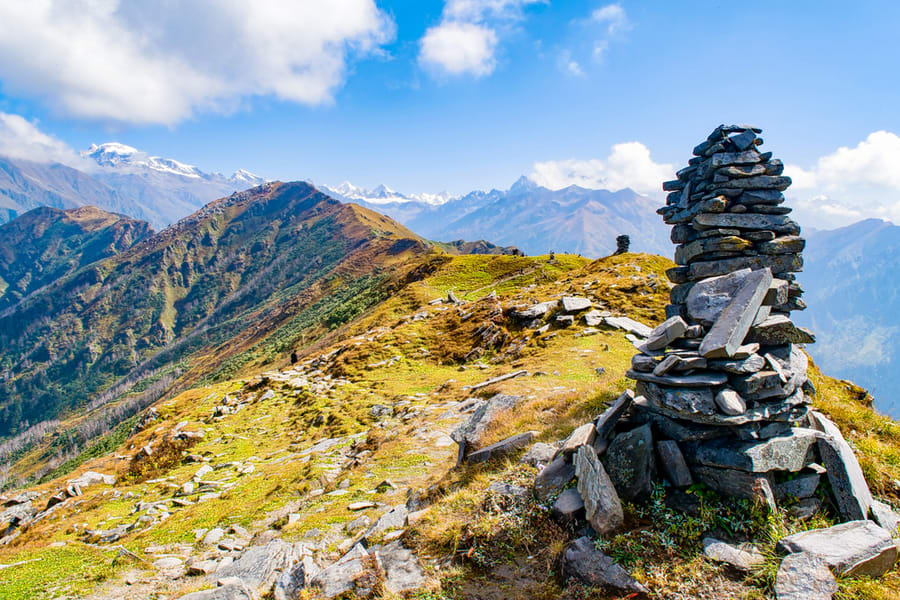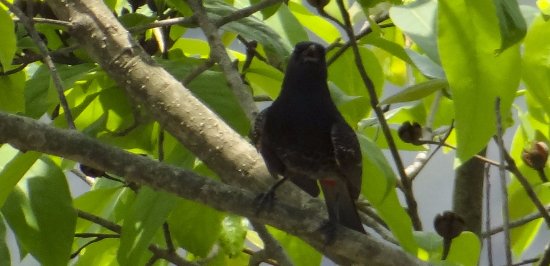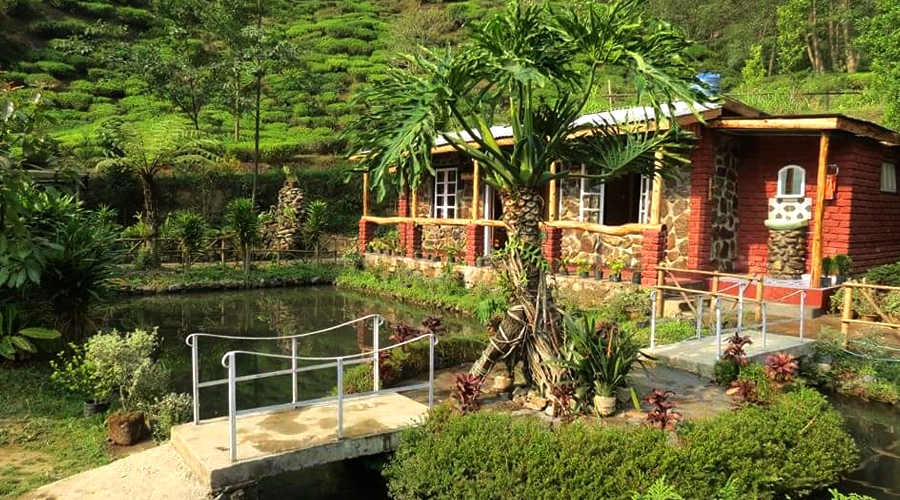Overview:-
About the Destination:
Located at Associate in nursing elevation of around 3,660m, the Chandrakhani Pass makes it for an astounding trek expertise within the Kullu natural depression of Himachal Pradesh. Originating from the scenic Naggar settlement, which is found around 21km from Manali, the path that ends up in the pass is understood for its captivating beauty and attractiveness.
From the pass, one will fancy the first-class views of the Deo Tibba, Parbati, and Pir Panjal peaks. Also, jotted with luscious groves of pine, deodar, golden oak and cherry, this pass boasts collectively of the foremost scenic and pictorial passes within the country.
About the Departure with Details:
The Chanderkhani Pass trek can provide you with a sense of isolation from the remainder of the planet as a number of the paths square measure hidden from the human eye. Over the three exciting days of the trek, you’ll be creating your manner through breathless viewpoints and rambling trails through the thick forest of firs and oaks. Every and each step of the trek is given with astounding views of the lofty peaks and makes it for a persistent experience! On a full, this trekking expedition can get you at home with the serene, pictorial and heavenly environment of Himachal Pradesh and its natural wonders.
Itinerary:-
Day 1 - NAGGAR – CHAKLANI (Approx. 10,400 Feet)
Pick up from Patlikhul/Naggar and drive until the start line of the trek. An uphill trek starts from the village through the attractive hayfield. At the start a steep ascend through pine, Oak and birch trees then a gradual ascend one grass-covered pastures to succeed in at Chaklani camp. Chaklani commands a fascinating read of Kullu natural depression and peaks of Dhauladhar vary. Long camp at Chaklani.
Day 2 - Day 02: CHAKLANI – CHANDERKHANI PASS – CHAKLANI (Approx. 12,500 Feet)
Initially a steep ascend through a carpet of high altitude flower field to succeed in the highest of Chanderkhani Pass – that is roofed with snow until finish of could, a heaven for nature lovers. The Pass overviews a large and bird’s eye view of PIR PANJAL, DHAULADHAR ranges and Annapurna natural depression. Traverse the ridge and obtain all the way down to the attractive camp at Chaklani. Long at Chaklani.
Day 3 - CHAKLANI – CHANDERKHANI PASS – CHAKLANI (Approx. 12,500 Feet)
Descend all the way down to the bottom camp Naggar through the attractive meadows and therefore the forest of Oak and Pine and recent villages of Kullu natural depression. Upon arrival at the bottom camp, look at and proceed to Manali by native cab. Make Manali by afternoon. Canvas the building. Day at leisure and relaxation. Long occupy Manali.
Sort Itinerary:-
Get yourself fit/Fitness Parameter:-
Here’s a fitness routine that works:
–>Target finishing five click in thirty five minutes once you begin.
–> bit by bit increase your pace by running four times every week and convey it all the way down to five click in but thirty five minutes.
–>This holds true for trekkers on top of forty five years conjointly.
If you’re someone you prefers athletics over running, then try and cowl twenty two click in hr.
Working out indoors
If you can’t go out and jog because of time and space constraints.
Things to take/Essential things to take:-
Bare Necessities:
- Trekking shoes: The trek distance is long and you will have to walk for long distances which need you to have comfortable trekking shoes. You can watch this video to learn to choose the right trekking shoes.
- Backpack (40-60 liters): A backpack with sturdy straps and a supporting frame. Rain cover for backpack is essential.
- Daypack (20 liters): As this is a crossover trek, you would only need a daypack if you are offloading your backpack.
Clothes
On a trek, carry fewer garments than you’d unremarkably want. Don’t pack for ‘what if situations’. Which will solely increase the burden of your backpack and not be used on the trek. Once your garments get warm au courant a trek, you’ll not desire ever-changing. Simply maintain personal hygiene.
- Three Warm Layers: You will be trekking and camping at high altitudes. The Bhojbasa campsite is especially windy. So make sure you have the apt clothes for the climatic conditions. It will be cold at the higher altitudes so make sure you have at least three layers of warm clothes to protect yourself.
- Two trek pants: One pair of pants should suffice for this trek. But you can carry one spare pair in case the first one gets wet. Wear one pair and carry one pair. Denim/jeans and shorts are not suitable for trekking.
- Three collared t-shirts: Carry light, full sleeved t-shirts that prevent sun burns on the neck and arms. Let one of these be a dry-fit t-shirt. It will dry quickly in case you are trekking on a rainy day. A common mistake that trekkers make is not changing their t-shirts often enough. Regardless of how cold it is, the body tends to sweat a lot. Trekkers who don’t change to fresh clothes after reaching the campsite fall ill due to wet clothes and are often unable to complete their trek.
- Thermals (Optional): Those who are more susceptible to cold can carry thermals to wear at night.
Accessories
- Sunglasses: Sunglasses are to prevent snow blindness.
- Sun cap: The sun is harsher at high altitudes so wear a sun cap to protect your face and neck.
- Synthetic hand gloves: One pair of fleece or woolen hand gloves. One pair of water proof/resistant, wind proof gloves.
- Balaclava: You may use woolen scarves instead as well.
- Socks (2 pairs): Apart from two sports socks, you can take a pair of woolen socks for the night.
- Headlamp/LED torch: Mandatory
- Trekking pole:
Others
- Daypack (20 liters): If you are offloading your backpack, you will need a smaller backpack to carry water, medical kit and some light snacks.
- Toiletries: Sunscreen, moisturizer, light towel, lip balm, toilet paper, toothbrush, toothpaste, hand sanitizer. Do not carry wet wipes since these are not biodegradable. If you do happen to use wet wipes to clean up after a trek, make sure you bring them back with you. The same holds for used sanitary napkins. Carry a zip lock bag to put used wet tissues and napkins. Bring this zip lock bag back with you to the city and do not dispose wet tissues and sanitary napkins in the mountains.
- Cutlery: Carry a spoon, coffee mug and a lunch box. We insist on trekkers getting their own cutlery for hygiene reasons.
- Two water bottles: 1 liter each
- Plastic covers: While packing, use plastic bags to compartmentalize things and carry few extra plastic bags for wet clothes.
Mandatory Personal Medical Kit
- Diamox – 10 tablets
- Dexamethasone – one strip
- Nifedipine – 5 tablets
- Crocin – 6 tablets (fever)
- Avomine – 4 tablets (motion sickness)
- Avil 25mg – 4 tablets (allergies)
- Combiflam – 4 tablets (Pain killer)
- Norflox TZ & Lomofen– 6 tablets each (diarrhea)
- Digene – 10 tablets (acidity)
- Omez/ Rantadine – 10 tablets (antacids)
- Crepe bandage – 3 to 5 meters
- Gauze – 1 small roll
- Band aid – 10 strips
- Cotton – 1 small roll
- ORS – 10 packets
- Betadine or any antiseptic cream
- Moov spray (aches, & sprains)
- Knee cap, if you are prone to knee injury
- Anti-fungal powder
Mandatory Documents
Please email a scan of your ID document (PAN, Aadhar card or Voter ID) to your Ground Coordinator as soon as you have finished registering for the trek. If you submit the Aadhar card or Voter ID scans, please make sure that we get both the side. This is required in advance to get the necessary trekking permissions.
- Original and photocopy of government photo identity card- (driving license, voters ID, etc.)
- Medical Certificate and Disclaimer (to be filled by the trekker)
- Medical certificate (to be filled by a doctor)
Map & getting there/Map:-
Safety:-
Acute Mountain Sickness (AMS)
AMS is one among the largest dangers on a high altitude trek like Hampta Pass. AMS happens once your body isn’t acclimatizing to its surroundings. It will accelerate terribly chop-chop, thus it’s necessary to spot the symptoms as before long as you see them. Before you scan any.
Why you should personally know about the risks and precautions of high altitude treks?
If ever you discover yourself alone at high altitude, either whereas trekking severally or with another organization, there square measure some life-saving steps you’ll take. Firstly, you ought to be ready to recognize symptoms of hypoxia.
Secondly, there can be instances after you got to administer medicines to yourself or to a fellow traveller.
If you’re trekking severally then you wish to grasp once precisely to administer these medicines and in what dose.
The video below can assist you perceive what medicines to administer once and the way abundant. Sandhya UC, partner at, explains well concerning HAPE and HACE. Here, you’ll find out about the advanced symptoms square measure and the way to tackle them.
It is a myth that fit and experienced people are not affected by Acute Mountain Sickness:
If you’re of the opinion that work individuals don’t get AMS, please get obviate that notion promptly. AMS will anyone while not paying heed to their fitness and previous expertise at high altitude! Hypoxia doesn’t distinguish between a primary timer and a seasoned traveler.
For additional elaborated data concerning acute altitude sickness, you’ll transfer and study the manual below.
Cancelation policy/Terms & Cancelation Policy:-
Terms & Conditions
1. Cancellation: If a trek is termed off at the last moment because of a natural calamity/unforeseen circumstances (like rains, earthquake, landslides, strike, bandh etc), can issue a trek voucher for the complete quantity. The voucher may be saved for constant trek or another trek within the next one year.
In case, you want to cancel your trek, please login to your account and cancel. Cancellation requests won’t be confiscate phone or email.
Cancellations prior to 30 days from the start of the trek — full refund.
- Cancellation between 30 days and 20 days to the start of the trek — 50% refund.
- Cancellation less than 20 days to the start of the trek — no refund.
Please note: In case of refund, there will be a deduction of 4% (cancellation charges) from the total fee you have paid. Also, if you have opted for a trek insurance, the amount will not be refunded.
2. Pick up: Trekkers square measure needed to succeed in Keylinga lodge, Prini, three kilometer from Manali, by 11.30 am on Day one. Once a brief making known session and lunch, we’ll begin for Jobra at 1:00 PM.
3. Backpack carrying: Trekkers square measure needed to succeed in Keylinga lodge, Prini, three kilometer from Manali, by 11.30 am on Day one. Once a brief making known session.
4. Emergency during trek: During a trek a medical emergency or the other emergency might arise. If for any reason you’re sent down from the trek then can create arrangements for your come back to the bottom camp or nearest road head. An employees can accompany you. He might not be a trained personnel.
Evacuation or addressing emergencies is extraordinarily tough within the mountains. It’s time intense further. A standard trek of two hours might take six hours in associate emergency (a sufferer isn’t straightforward to evacuate). Doctors don’t go together with a team. Doctors aren’t out there at the bottom camp or nearest road head either. Trek leaders square measure trained to administer attention and knowledge to contend with problems associated with the mountains. However, they’re not doctors.
Registering for this trek is associate perceiving that you simply have scan abreast of the difficulties of high altitude trekking and understand the risks. You have got additionally understood what AMS, HAPE and HACE square measure. You have got taken efforts to teach yourself and you’re during a position to manage your own altitude connected emergency.
5. Fitness: A high altitude trek within the Himalaya Mountains needs right smart fitness. Your body has to train itself to method additional work with lower levels of O. Therefore, on treks, vas coaching is critically necessary. You wish to be ready to jog a distance of five kilometer in thirty five minutes before begin of the trek. Unable to try and do thus will create your trek tough. Additionally, preparation of trek has to embrace strength and suppleness coaching. Registering for the trek is associate understanding that you simply can undertake the mandated fitness coaching. Trekkers UN agency haven’t adequately ready could also be asked to discontinue the trek at any purpose. Has the proper to reject candidates UN agency don’t meet our eligibility demand at the bottom camp.
6. Non-liability: Damage of your gears/equipment or different belongings on the trek.
7. Payment: Payment for the trek may be done on-line through credit/debit card or internet banking. Cheque/draft or money isn’t accepted.
8. Drinking and smoking: Throughout the trek is strictly prohibited. If found flouting the foundations, your participation on the trek are off with immediate result.
9. Route changes, postponement, delay or finishing the trek a day earlier: Beneath some extraordinary circumstance, your trek might finish each day earlier or begin each day later. This could become necessary because of inclement weather, snow and ice conditions, political restrictions or the other cause.
Within the event of an amendment, postponement or delay, participants haven’t any right to refund of the trek.
10. Safety Protocol:
a. whereas our itineraries are designed to permit for adequate acclimation, most treks in Indian Himalaya Mountains climb quickly, that is termed forced accents. Unavailability of camp sites and therefore the Indian Himalayan tract square measure the rationale for this. There square measure chances that you simply can feel the consequences of hypoxia and O deprivation whereas on this trek. Please remember that your trek leader might take for it unsafe for you to continue trekking at any time, and prepare for you to descend to a lower perspective.
b. Our trek leaders can conduct routine health checks in the least camps to live O saturation, pulse and force per unit area. Reserves the proper to exclude any traveler from rising higher on the trek while not refund if the trekker’s important readings square measure below accepted norms for that altitude. These norms square measure out there with trek leaders.
c. this can be a high altitude trek with rough, rocky and snowy tract. It’s necessary that you simply square measure a work and assured walker in mountain tract, ready to manage ascents and descents by yourself inside an inexpensive time. Reserves the proper to show around a traveler if within the opinion of our trek leader they’re unable to complete the itinerary while not requiring exclusive help. Please realistically self-assess your fitness and quality for this trek before registering.



